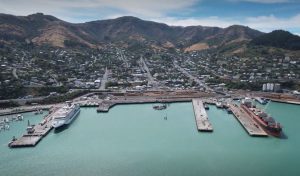LPC is the first New Zealand company to sign up as an ‘early adopter to publicly report nature-related issues. Lyttelton Port Company identifies nature-related risks and dependencies,
How does LPC intend to respond to nature-related financial risks and dependencies?
Like climate-related disclosures, companies are encouraged to understand their financial, social and environmental risks to nature loss and how they plan to respond.
LPC follows the frameworks – Taskforce for Nature-related Financial Disclosures (TNFD) and the Science-based Targets for Nature (SBTN).
What is LPC doing?
LPC is the only New Zealand company to commit to disclosing our nature-related risks and dependencies this financial year.LPC is working with tangata whenua to assess impacts, develop targets and take action.
According to the World Economic Forum, global biodiversity decline is one of the top ten risks to our future, The global economy depends on nature, yet habitats and biodiversity are in a poor state of health.
New Zealand is one of the two hundred governments around the world to commit to urgent action for nature.
Our Environment and Sustainability team have been working through the steps needed to understand the impacts LPC has on nature and how LPC depends on nature. Soon, we will be working with others at LPC to develop our most significant risks and opportunities relating to nature and where we will prioritise to take action.
How dependent is LPC on nature?
We rely on raw materials for our projects like cement, timber, asphalt, and rock to fuel our machinery. Our business depends on nature’s health to support the trades that use fisheries, agriculture, timber, dairy, recreational vessels, etc.
We rely on the quality and quantity of fresh water to operate and also on the harbour’s ability to dilute and buffer the runoff we discharge. Nature’s storms and tides determine the state of the channel and the need for dredging.
How much impact do LPC’s activities have on the surrounding environment?
Dredging, reclaiming the seabed and shoreline, discharging pollutants into the air, land and water, and utilising land for our activities all have varying impacts on nature. We have mapped the extent of our activities and the habitats they overlap with.
Compared to the time before the port existed in Whakaraupō in 1860, we are calculating how our activities have changed the environment and impacted biodiversity.
LPC is working in partnership with Te Hapū o Ngāti Wheke on the extent to which port activities have impacted the ability of manawhenua to collect and sustain food in the harbour.
